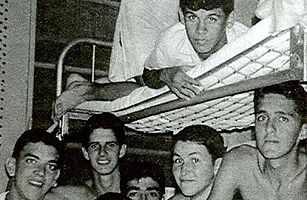
As Cold War fear loomed large in 1960 — a year after Fidel Castro seized power in Cuba — a plan was hatched to whisk the island nation's children from their Communist homeland to America. Dubbed Operation Pedro Pan, the initiative lasted 22 months — until flights from Havana to the U.S. were grounded during the Cuban Missile Crisis — and involved ferrying a total of 14,000 kids to new homes in the US. The move proved to be one of the biggest moves of unaccompanied children in history.
Some were placed in group facilities, some had relatives in the States, and some joined American families. Most were sent with hopes of their living a richer life away from what their parents and American sponsors saw as Communist indoctrination. The operation was named after one of the first émigrés, Pedro Menendez, who had been sent to America and shifted among family members before ending up on the doorstep of the Catholic Welfare Bureau.
Following the transfers, culture shock and pathos-filled news stories ensued as children who expected their parents to follow them to America worried that they might never see them again. Those involved in the exodus still refer to themselves as "Pedro Pans," and Catholic agencies have recently offered to help carry out "Pedro Pan plans" for Haitian children, though U.S. officials have been cool to repeating the exodus.